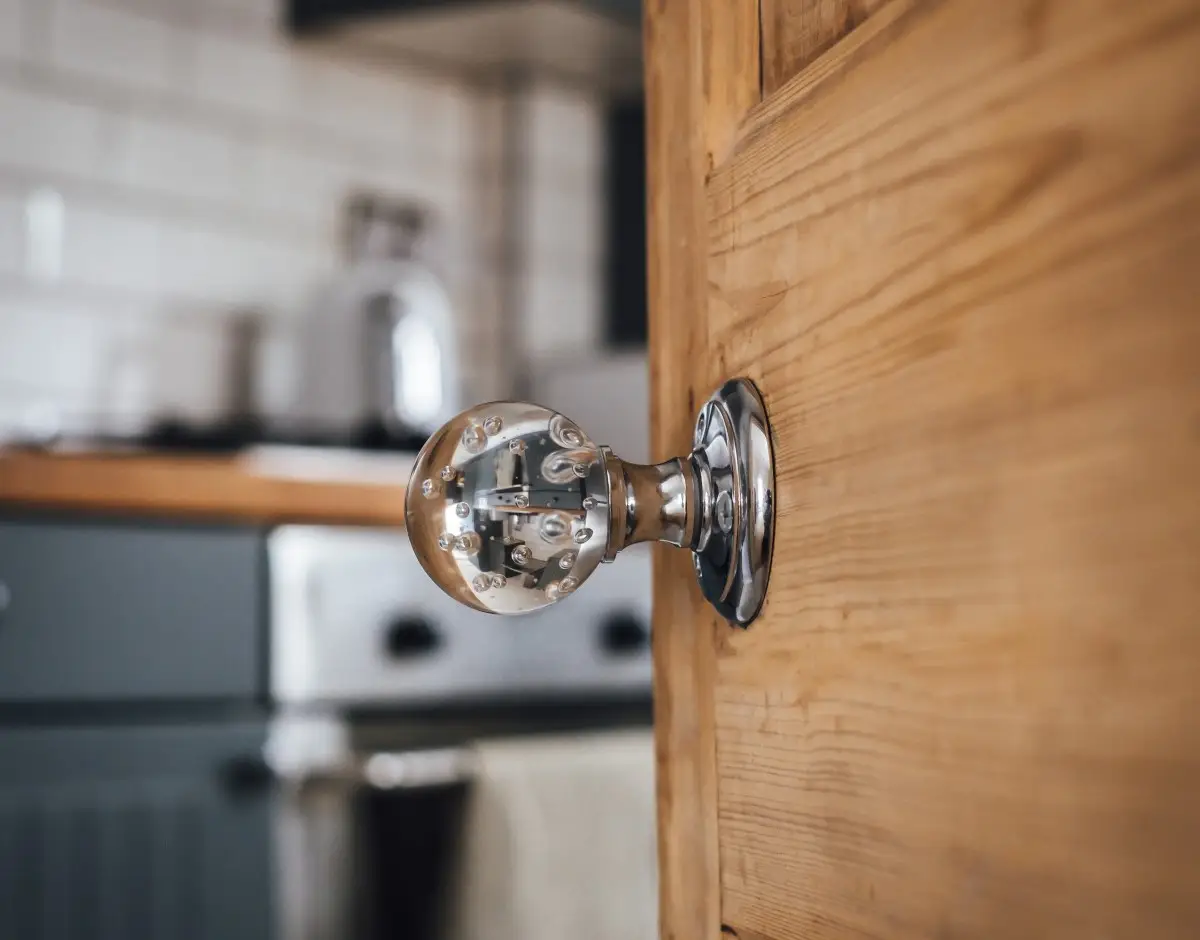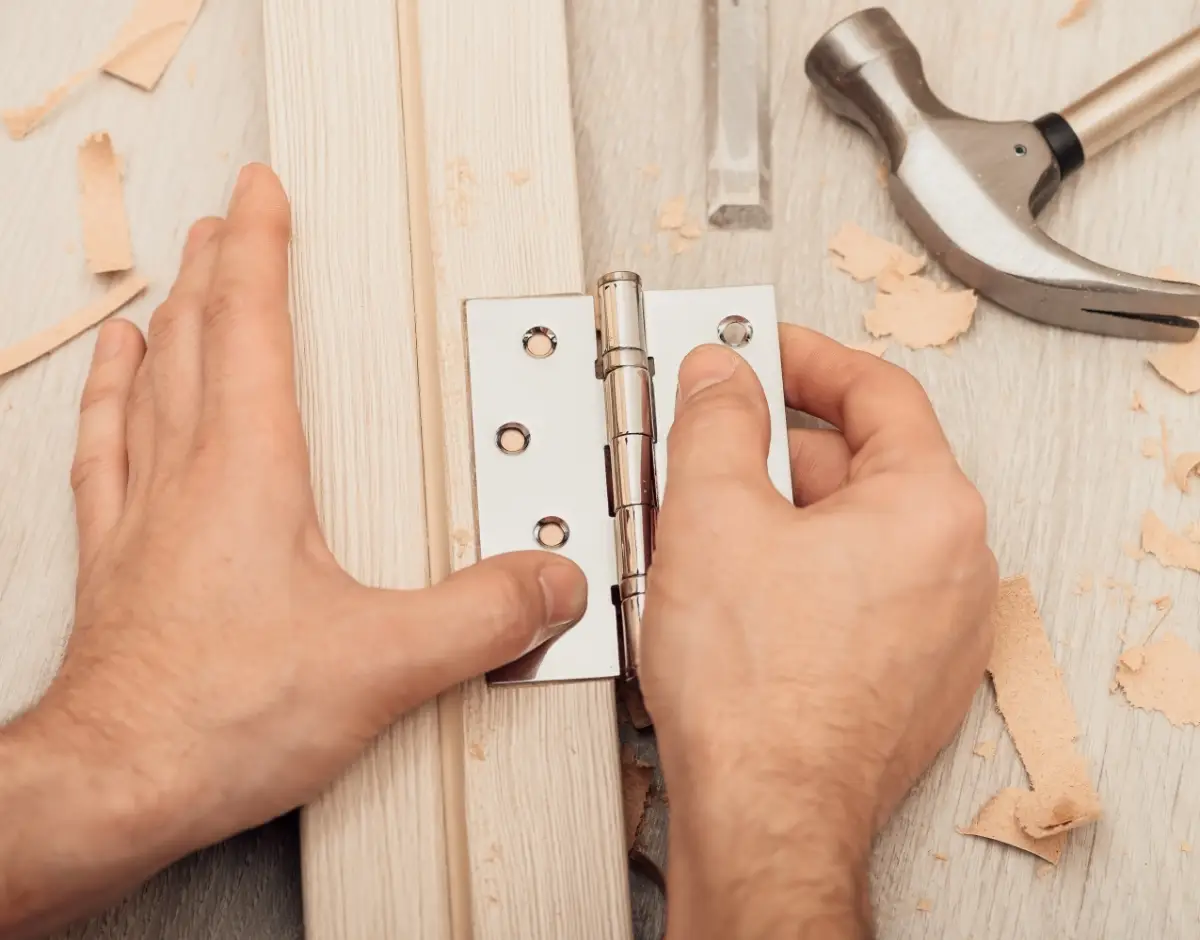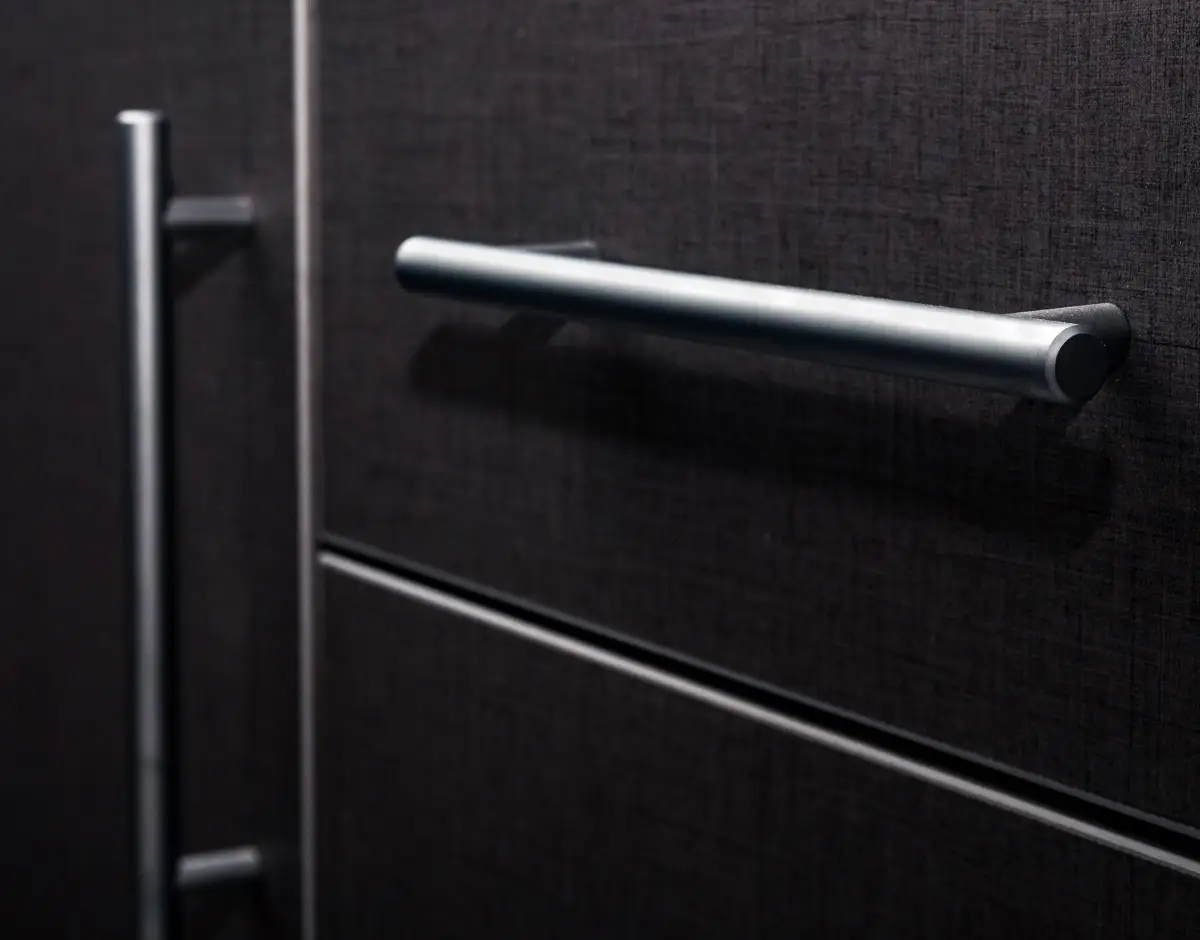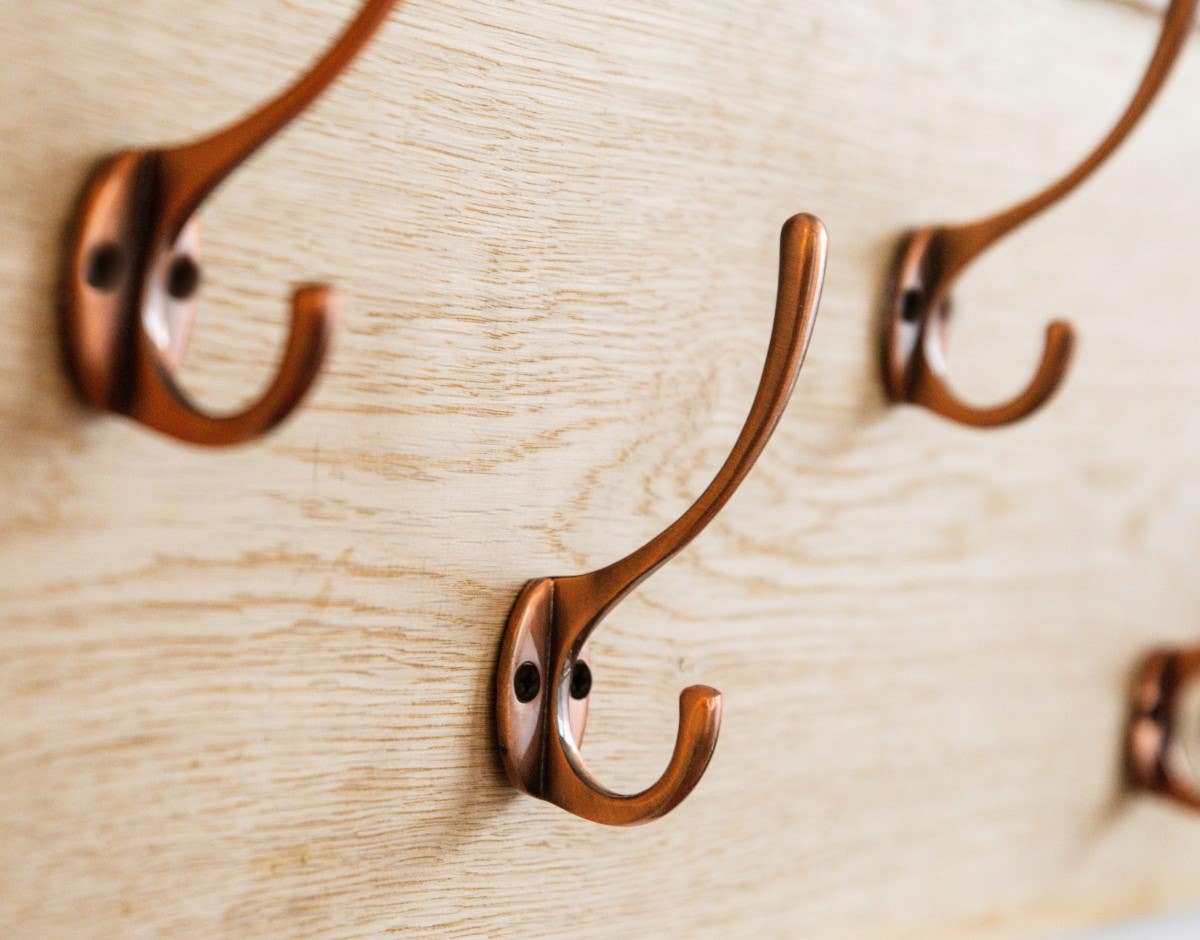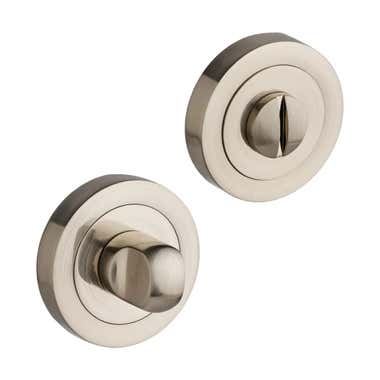- Bathroom Door Thumbturn Lock and Release Set - Antique Brass - Hollow/Solid Doors -...£9.96 £8.303 reviews
- 5 out of 5
- Stefka Roberts
- ????????????????????????????????
In Stock | SKU: 9003AB - SAVE 28%Bathroom Door Privacy Indicator Bolt - Satin Nickel - Fixings Included - Hardware...Special Price £4.98 £4.15 £6.962 reviews
- 5 out of 5
- James K
- Great product, aligning turn rod a wee bit tricky also wording slips
In Stock | SKU: 1209SN - Bathroom Thumbturn Lock and Release Set w/ Spindle - Dual Tone Nickel - Designer Levers£7.98 £6.6510 reviews
- 4 out of 5
- Jake Munn
- Nice finish which matched my dual tone door handles very well, and good price. Be aware they're not the easiest to turn - they've not that big. If your grip isn't that great, I'd opt for a different design.
In Stock | SKU: 9003DN - Door Frame/Door Thumbturn Lock - 40mm - Polished Chrome - Security Solutions£2.98 £2.488 reviews
- 5 out of 5
- gerald nunn
- excellent quality easy fittings
In Stock | SKU: TS29642 - Bathroom Door Thumbturn Lock and Release Set - Brushed Silver Nickel£9.96 £8.3038 reviews
- 5 out of 5
- Nichola Atkinson
- Love these,and the satin finish great quality
In Stock | SKU: 9003BN
Automatically applied at the checkout
Based on 9,361 happy customersFree Next Day Delivery Over £75 (Inc Vat)*
£10 Off Orders Over £250 (Inc Vat) | Same Day Dispatch
How do thumb turn locks work
Also sometimes referred to as a bathroom lock, a thumb turn lock is a simple mechanism that is usually installed on bedroom or bathroom doors.
Able to provide people with privacy when they need it, this kind of door furniture also comes with a safety feature that allows it to be opened from the outside, should an emergency arise and you need to get in quickly.
This is particularly useful for those who have young children or elderly relatives living with them, who may, on occasion, inadvertently lock themselves in
So, how do thumb turn locks work exactly?
Using a thumb turn euro cylinder is a very simple process. In order to lock the door, the knob should be turn in an anti-clockwise direction until it will move no further and you hear the deadbolt move into place.
Naturally, to then open the bedroom or bathroom lock, you reverse the process, rotating the thumb turn in a clockwise direction.
Are thumb turn locks secure?
While many types of thumb turn will be the kind used on a bedroom or bathroom door, there are varieties that feature a euro lock mechanism. This means that they're also able to used on external door.
Obviously, bathroom door thumb tun locks are not as robust as their external counterparts - largely due to the fact that they're typically installed for privacy reasons, rather than security.
Additionally, when the person inside becomes unable to turn an internal thumb turn clockwise to get out, a privacy lock such as this can be opened using the emergency release slot on the outside. This is a feature that's great for safety, but not so for keep people out.
External thumb turn locks, however, don't have this feature and simply serve to make it possible to lock external doors from the inside without the need for a key. Typically used in conjunction with an highly secure mortice or euro cylinder lock, this type of thumb turn lock is as secure as most other you'll find.
Thumb turn lock or key?
One of the best features of a thumb turn lock is the convenience it offers, as we've all been in a situation where someone's at the front door and the key is nowhere in sight.
They're also incredibly useful in an emergency, such as a house fire, with the ability to get out without a key often proving a real lifesaver.
There's also the issue of someone leaving a key on the inside with a regular front door lock. As anyone who has done so in any of their external doors will know, your key won't work when there's another key inside on the inside.
This is not an issue with thumb turn locks, as it's impossible for that to happen.
Are There Any Downsides to Thumb Turn Locks?
They are more susceptible to access by burglars - hence the reason why they're typically not approved by insurance companies in the UK.
Those that meet British Standard BS8621 are approved due to their ability to better resist picking. That said, they are still only insurance-approved when they're used on front doors of flats.
So, in most cases, you won't be able to have thumb turn locks installed for external doors that are approved by your insurance company. As such, most often in the UK, the decsision has been made for you.
Do thumb turn locks invalidate insurance?
In the same was as insurance companies stipulate that you should have key operated window locks to keep burglars out, they also have rules that cover the kind of door locks you can have on external doors.
Tradtionally speaking, external thumbturn locks are not approved by insurance companies in the United Kingdom, however, there is an exception.
When the thumb turn door locks in question meet British Standard BS8621, they are insurance approved. That said, their use is only permittted when used for front doors in flats.
As is the case of window locks, it's always best to check with your insurance provider for detailed information about what's allowed and what isn't.
What's also going to have an influence on whether your door locks are insurance approved or not, is how well they're installed. If they're poorly fitted, you could find them refusing to pay up when you make a claim!
Why Are Thumb Turn Door Locks Approved Otherwise?
- There are a few reasons why insurance companies don't approve thumb turn key operated locks and they include:
- It's a little bit like leaving your key inserted inside to make things easier - which is deemed as being less secure.
- There's a potential for someone to reach in through the letter box and unlock the door.
- They're relatively easy for professional thieves to pick
How to pick a thumb turn lock
Some thumb turn locks can be unlocked relatively easily by a professional locksmith or burglar - hence the reason why they tend not to be insurance-approved.
Rather than talking about an internal thumb turn lock you might find installed in a bathroom door, here we look at how to pick a euro cylinder lock with an internal thumb turn mechanism - the type typically installed in external doors.
You Need the Right Tool
However, in order to pick a thumb turn lock, you will need the right equipment, which in this case is a lock pick - which is essentially something that looks like a small screwdriver with a curved L-shape at the end.
- Step One - Firstly, you'll be inserting the pick into the cylinder lock and pushing to the back, as far as it will go, with the L-shaped part pointed upwards.
- Step Two - As you do so, you'll be pressing the pins down, all the way until you've done them all.
- Step Three - Now, if you've done things correctly, twisting the pick will now rotate the thumb turn, as if it was being operated from the inside.
How to measure thumb turn lock
When installing a thumb turn cylinder into an internal or external door, it's imperative that you know its exact measurements. If you don't accurately measure things, you'll either end up with a bad fit or a lock that simply won't work.
The good news is that all it takes is a tape measure to accurately determine the exact size of euro cylinder lock you'll need.
Here are the main measurements you'll need to take to ensure you order the correct one for your needs:
- Measurement A: Beginning on the side of the thumbturn, measure from the end of the euro cylinder barrel to the middle of the fixing screw hole.
- Measurement B: Now, moving to the key turn side of your euro cylinder lock, repeat the measurement from that side of the barrel to the fixing screw hole.
- Measurement C: If, however, you want to know the measurement of the entire barrel, simply measure from one end of the barrel to the other.
How to remove a thumb turn lock
When fitting a euro cylinder thumb turn lock to a bathroom or bedroom door, what you're most likely to be doing is replacing an old or broken one.
While good quality euro cylinder locks will last many years - even in high traffic areas - they, like most things, will wear out eventually.
So, obviously, you'll need to know to remove it, to make way for the replacement euro cylinder lock. The good news is that it's quite simple to complete.
Removing Thumb Turn Euro Cylinder Locks
The only tool you'll need is a suitable Phillips head screwdriver, with which you're going to be removing the retaining screws of the thumb turn lock's bolt.
Next, we'll be unscrewing the thumb turn, before the external safety screw mechanism. From here, it should be simple to pull the mechanism apart, ready for your replacement cylinder.
Before throwing your old thumb turn away, just be sure that you've purchased a suitably-sized euro cylinder lock.
How to fit a thumb turn lock
Here we look at how to fit a thumb turn lock and for our purposes, we'll assume that the door in question does not have an existing lock in place.
Depending on how experienced you are in DIY jobs like this, the whole process may take an hour or two, so be sure to put enough time aside.
The Tools You'll Need
In order to successfully fit your thumb turn lock, you'll need the following tools:
- Wood chisel
- Hammer
- Electric drill & drill bits
- Screwdriver
- Measuring tape
- Hacksaw
- Adjustable square
- Safety glasses
- Pencil or Marker
Before we start installing the thumb turn lock, be sure to wedge the door in a fixed position so that it's not moving around as you're working on it.
Step #1 - Measuring to Find Ideal Thumb turn location
Your thumb turn lock can be positioned either below or above the door handle, as long as it remains easy to access for the user. Once you have determined the perfect location, use your adjustable square and pencil to mark it on the door.
Step #2 - Drilling the Lock Holes
Using a drill bit that has the same diameter as your thumb turn lock, you're now going to drill the holes for the lock. You only have to drill into the door up to the width of the lock, but you must be very careful to do so parallel to the door.
At this point, you'll have created quite a bit of mess in terms of wood shavings, so it's good practice to hoover them up and keep your working area tidy.
Step #3 - Make Enough Latch Plate Space
Earlier, we marked out the area for the latch plate, which we'll now be chiselling out carefully, making sure not to go outside of the lines.
This is a step that must be carried out very carefully so as to not damage the door. You also need to make sure you don't damage yourself, so always chisel away from your body! Keep working the area until there's sufficient space for the latch plate to fit flush with the door.
Step #4 - Drilling Your Thumb Turn Holes
Next, we'll be drilling the holes for the thumb turn with an appropriately-sized bit. We begin by measuring out and marking the holes on both sides - as both the internal thumb turn and the external mechanism that allows the door to be opened from the outside, must be fitted.
Step #5 - Fitting Screw Mechanism & Thumb Turn
Now you should push the thumb turn lock inside the door before adding the external screw mechanism to ensure that it works smoothly in both directions. Once happy, screw everything firmly into place.
Then do the same with the thumb turn, and we're nearly done!
Step #6 - Installing the Strike Plate
Lastly, you need to mark where the bolt meets the door frame when locked and chisel out the necessary amount of recess to ensure another flush fit. All that's left to do then is screw everything in firmly.
Follow these steps to the letter, and you'll now have a new bathroom thumb turn lock that works great!
Types of thumb turn locks we offer
Hiatt Hardware offers four types of thumb turn with different designs and prices. They include:
-
The Bathroom thumb turn release and set dual tone nickel
It comes with dual-tone nickel and goes for £7.98. It has a 50-millimetre diameter, and the pack has one set of thumb turn and release with fixings and a spindle.
-
Thumbturn lock polished chrome
Has a 40-millimetre diameter and costs £3.00. It has a decorative polished chrome finish, and it is made of solid zinc construction. Fixings are included in the purchase and are suitable for internal doors.
-
Bathroom thumbturn and release set – Chrome
This design has a polished chrome finish. The pack comes with one set of thumbturn, fixings, and spindles. It has a 50-millimetre diameter.
-
Bathroom thumbturn and release set – brushed nickel
The design has a satin brushed nickel finish. It also has a 50-millimetre diameter, and the pack comes with a set of thumbturn and release with fixings and a spindle.
-
Bathroom Door Thumbturn Lock and Release Set - Antique Brass
This Thumb turn lock in antique brass finish has a 50mm diameter and a price of £7.98.
What to consider when purchasing a thumb turn lock
When comparing different thumb turn lock options, you will want to consider function and style. When looking at a range of finishes and designs available, consider the home's style. Moreover, think about the security needed as you compare different options.
It is also important to take into account the door design where you will be installing the thumb turn lock and take measurements before buying.
Door design
Before you buy thumb turn locks, ensure it works on your doors. If you are using the lock on a door with predrilled holes or an existing one, make sure you measure the hole’s diameters and ensure it will completely cover the openings.
Furthermore, take the measurements of the backset – distance from the edge of your door to the centre of the hole and the door stile’s width. Also, consider the thickness of your doors. If the thickness differs from the thumb turn locks’ standards, you may be required to buy conversion parts to ensure the lock works with your doors.
Style
Thumbturn locks come in different styles and finishes. This allows you to select the model that complements the style of your home. When choosing a style, know that antique bronze and oil-rubbed bronze living finishes change over time. Polished brass tarnishes when exposed to light, that is why they are specifically made for indoors.




